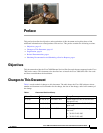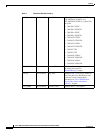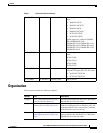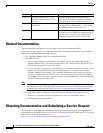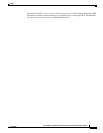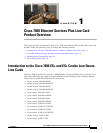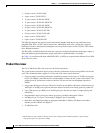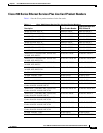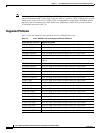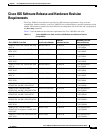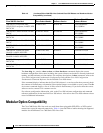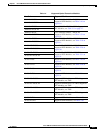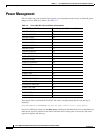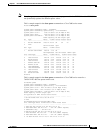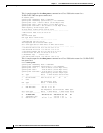
1-2
Cisco 7600 Series Ethernet Services Plus Line Card Hardware Installation Guide
OL-16146-10
Chapter 1 Cisco 7600 Ethernet Services Plus Line Card Product Overview
Introduction to the Cisco 7600 ES+ and ES+ Combo Low Queue Line Cards
• 40-port version: 76-ES+T-40G
• 4-port version: 76-ES+T-4TG
• 11-port version: 76-ES+XC-20G3C
• 11-port version: 76-ES+XC-20G3CXL
• 22-port version: 76-ES+XC-40G3C
• 22-port version: 76-ES+XC-40G3CXL
• 11-port version: 76-ES+T+XC-20G
• 22-port version: 76-ES+T+XC-40G
• 8-port version: 76-ES+T-8TG
• 8-port version: 76-ES+XT-8TG
The difference between the versions are the link interface daughter cards that accept small form-factor
pluggable (SFP, SFP+, or XFP
1
) optical transceivers. Additionally, each of the versions has a common
baseboard card and a control processor daughter card, except for the 8 port version (76-ES+T-8TG) which
has a different baseboard.
The SFP, SFP+, and XFP modules allow the line cards to be configured for different media types (copper or
fiber) and different optical requirements (single mode fiber or multimode fiber) as available.
See Table 1-4 for information about which SFPs, SFP+, or XFPs are accepted on the different Cisco 7600
Series ES+ line cards.
Product Overview
The Cisco 7600 Series ES+ line cards have the following features:
The system features listed here specify some of the key performance metrics and capabilities of the line
cards. The information below applies to all four line cards unless stated otherwise.
• Line rate feature processing performance with 64 byte packets for four ports of 10 GE or forty ports
of GE (59.52Mpps). Note that the line card throughput is limited by the system switch fabric. The
packet processor and internal sections of the line card are full line rate throughput capable for
40GbE.
• Large output buffers provide up to 200 mS of round-trip-time buffer (100 mS in each direction) per
10GE port or 10xGE ports to prevent transient output overloads from causing spurious packet loss.
• Up to 32K queues (per 10GE port or 10xGE ports) per direction for input or output queuing and
scheduling.
• Programmable ingress and egress feature processing capability through the Trident.
• 40+ Mpps Layer 3 or Layer 4 forwarding, 125Mpps Layer 2 forwarding.
• Dual fabric attachment providing an aggregate bandwidth of 40Gb/s, full duplex (each fabric
channel provides 20Gb/s, full duplex).
• 512-MB boot disk
1. SFP modules are optics modules with speeds lower than 10 Gbps; SFP+ and XFP modules are optics modules
with speeds equal to or greater than 10 Gbps.



